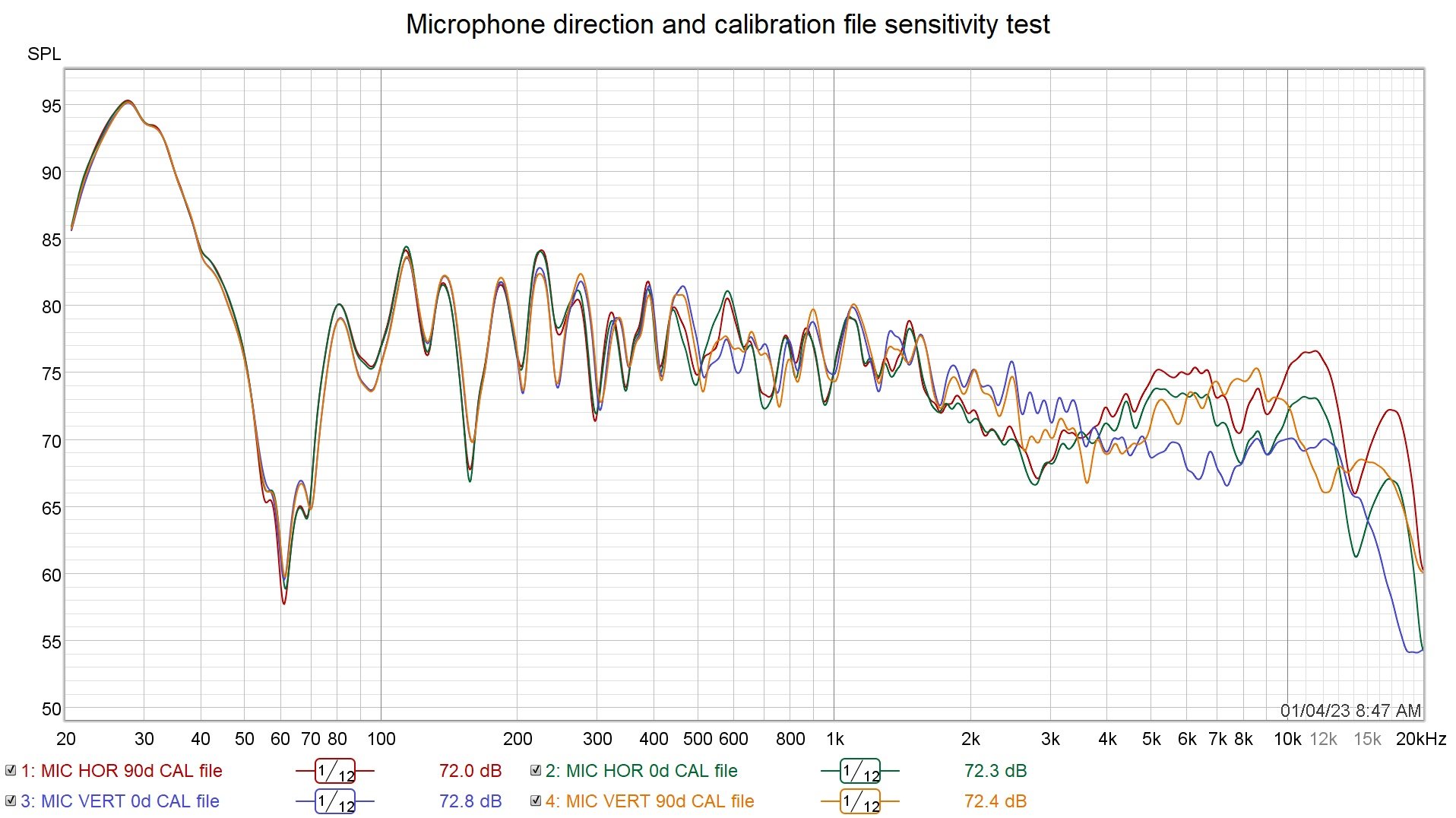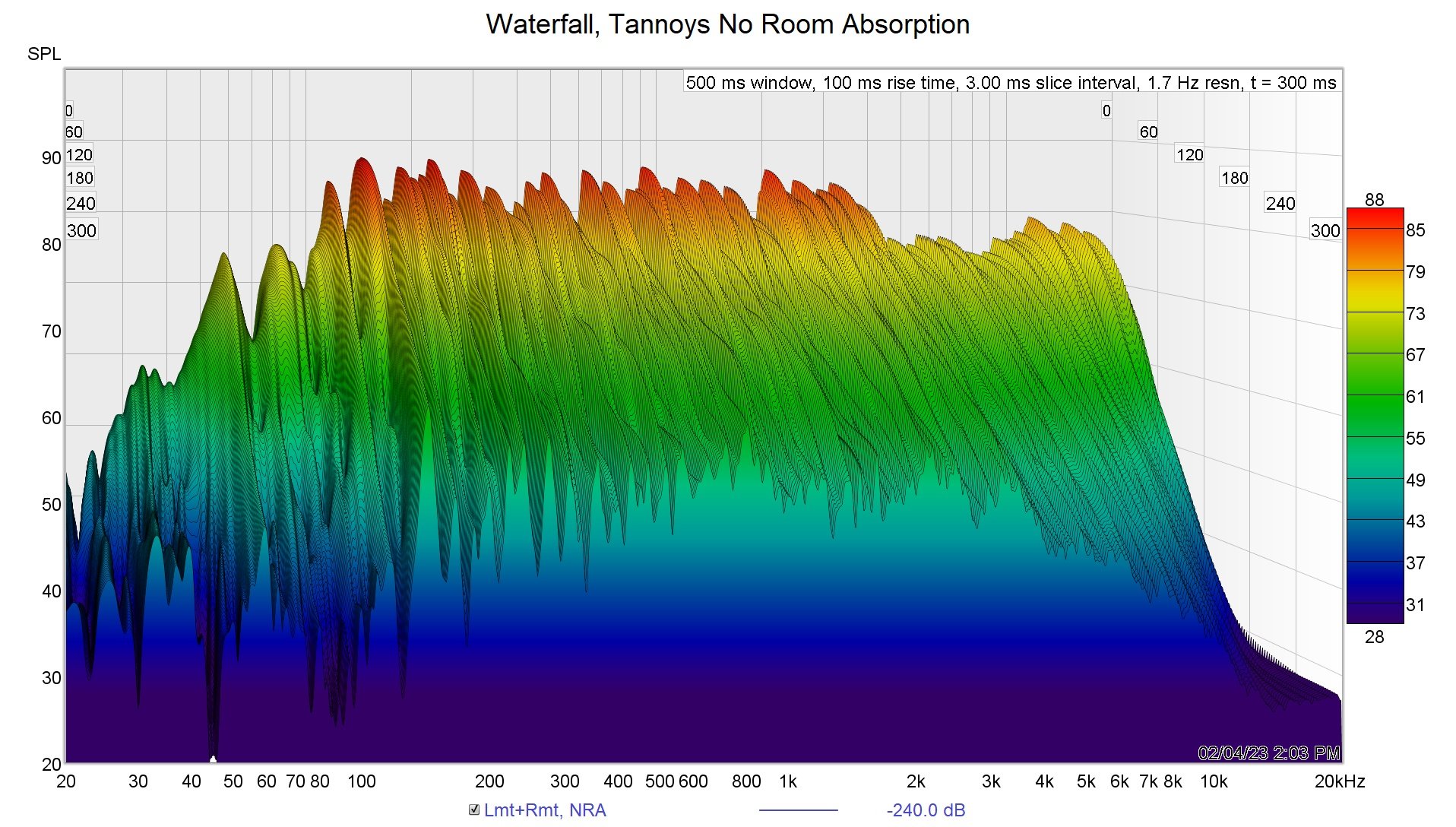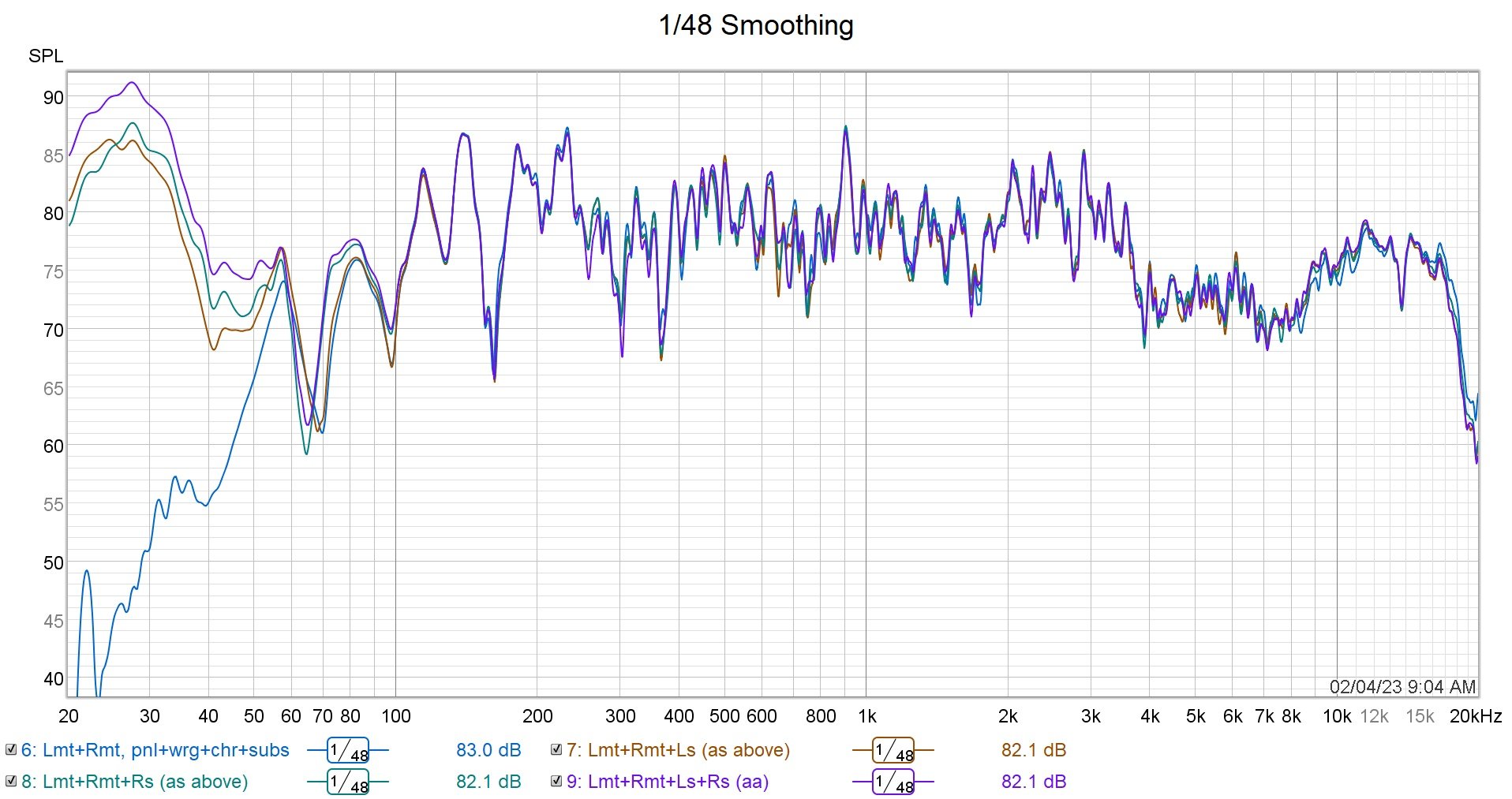Impact of Absorptive Elements
Do basic room absorption elements make a sonic difference and should you have them?
Yes! I have Room EQ Wizard measurements to show you how and why.
All measurements were collected with MiniDSP UMIK-1 microphone in the horizontal plane, 6 feet from the speakers, in-between left and right channels, at ear height. The system gain was fixed at 65dB (preamp) and REW gain fixed for comparative analysis.
Does microphone direction impact frequency response function (FRF) results? Yes.
Vertical mic position, with the Totem Acoustics Mani-2 loudspeakers and JL Audio E112 subs
Microphone direction and calibration file sensitivity test
Results of mic direction with the correct and wrong calibration file are shown below. Significant differences are present above 1.3 kHz. Horizontal should use the 0 degree and vertical 90 degree calibration file. There is debate that the vertical is more accurate due to pressure loading, Jesco at Acoustics Insider talks about this.
Tannoy Autograph Mini in room normal configuration (all absorbing elements present).
An important observation below is the measurement repeatability above 100 Hz suggesting small changes observed with absorption elements are in fact due to those items and not measurement variability.
Lmt: left main Tannoy, Rmt: right main Tannoy, Ls: left sub, Rs: right sub, Lm: left main (Totem) Rm: right main (Totem).
Tannoys with and without subs on
Totems with and without subs on
Totem & Tannoy with and without subs on
The Tannoy have greater high frequency extension up to 17 kHz which is obvious during listening sessions. The Totems start to roll off at 10 kHz.
The Isobaric Totem design is known for excellent low end extension for a bookshelf loudspeaker, this is obvious during listening sessions.
The small 4” Tannoy drivers start to roll off at 57 Hz and the Totem at 29 Hz. The JL Audio subs have obvious bass gains above the average SPL of the mains; typically the sub SPL would match the mains SPL.
Absorption Elements
The left and right 2” thick first reflection absorption panels lower the energy between160-1000 Hz and between 3.9 to 8.3 kHz
Left and Right Tannoys with and without first reflection panels
NRA: no room absorption (everything out)
Adding in a small floor rug and Ikea listening chair slightly lowers the energy again.
L&R Tannoys with additional absorption
Does bringing in both sub woofers (powered off) suck out energy? Very minimal changes are observed.
L&R Tannoys with Subs (powered off) in the room
Adding a 9.5’x13’ Thomasville shag area rug (Costco) 100% Polypropylene makes a big difference both in measurements and in listening sessions.
Tannoys with and without the shag rug
Room normal is with all absorption elements including the shag rug
Effects of all absorptive materials
dBA Sound Absorption
Energy removal at various frequencies, 3 to 8 dBA is significant!
RT20 with and without absorptive elements
RT20 is the time required for sound to decay in a room by 20 dB. It is accepted to use RT20 instead of RT60 (time required for sound to decay by 60 dB) in small rooms and data below 300 Hz is not presented (erroneous?).
NRA: no room absorption - top trace in blue. Room normal (all elements) - bottom plot in purple. Panels, white rug and chair in green; add in the subs in blue. Only panels in brown/orange.
There is a significant impact in RT20 time:
100 mSec at 300 Hz,
200 mSec between 800 Hz to 3 kHz,
150 to 80 mSec between 4k and 10k Hz.
The RT20 time is above 600 mSec with no absorption. The guideline is >300 & <600 mSec.
All absorptive elements out!
Waterfall & Spectrogram plots
Tannoys, without room absorption
Tannoys, with room absorption
all absorptive elements
The waterfall shows clearly the positive impact of the energy absorption, especially between 2 to 8 kHz.
300 mSec is shown in the Z axis. A 20 Hz cycle takes 50 mSec; 6 cycles would fit into this waterfall plot, 30 Hz 33 msec; 10 cycles would fit into the plot, 100 Hz 10 msec; 30 cycles would fit into the plot.
Consider sound energy sloshing in the room like waves in a pool, the decay is the amount of sloshing. Audiophiles advise keep your room live.
Tannoys, without room absorption
Tannoys, with room absorption
Tannoys & Subs, with room absorption
The spectrogram is simply another form of the waterfall with time on the vertical axis and amplitude in colour.
About Smoothing
Smoothing is used to simulate how our hearing interprets the room acoustics; a microphone is much more analytical that our ears and our psychoacoustics. Smoothing can be done in many steps, shown below for comparison. I chose to use 1/12 for my plots.
Psychoacoustic smoothing is close to 1/3; this is close to how we perceive sound.
Too Smoooooth.
So when you see a really smooth curve and note on its smoothness, smoothing has probably been employed. Watch out for the Smooth Criminals!
If you enjoy these articles please email and let me know, or find me on Instagram @audioacousticengineering
Ask me questions
Regards, Scotty
No shag































